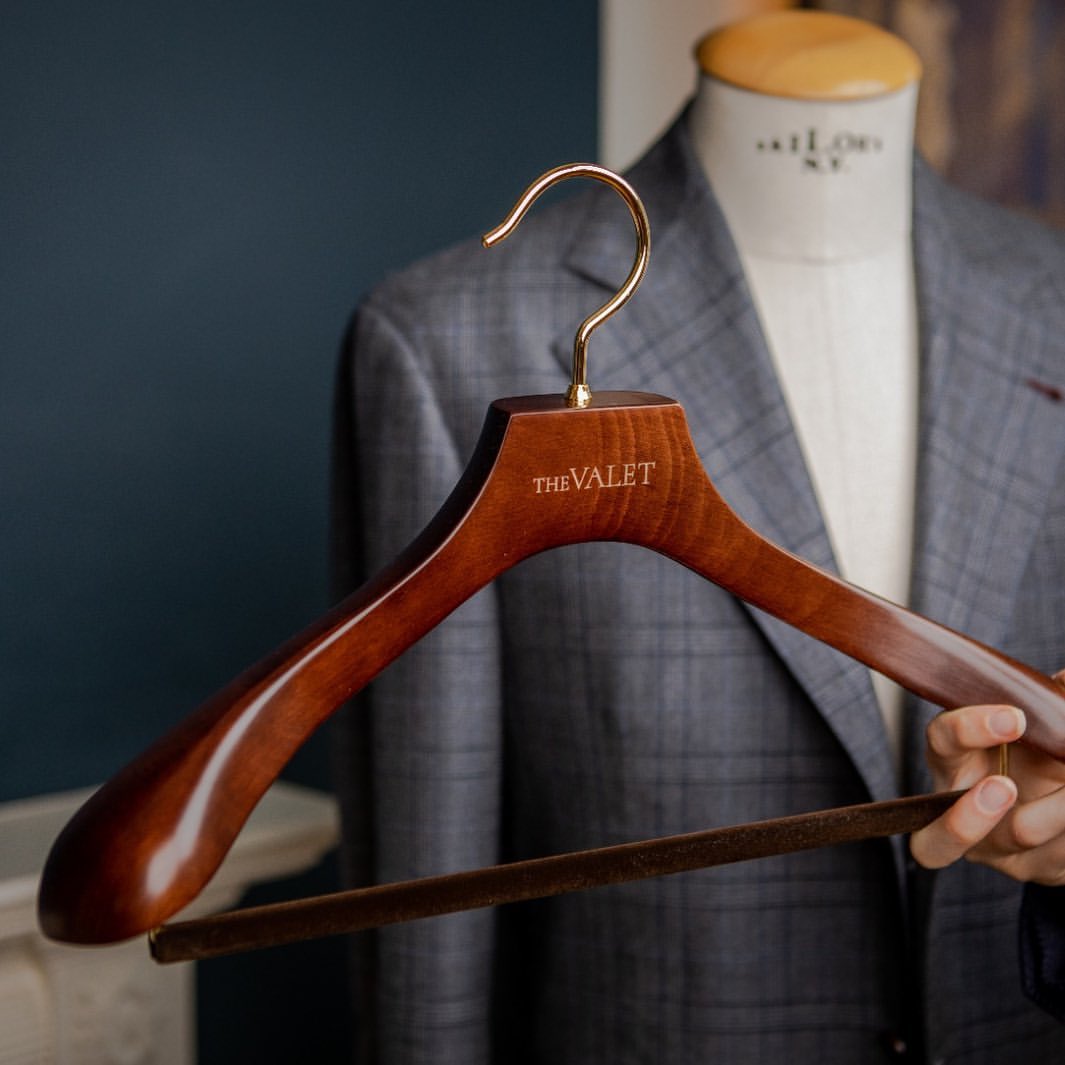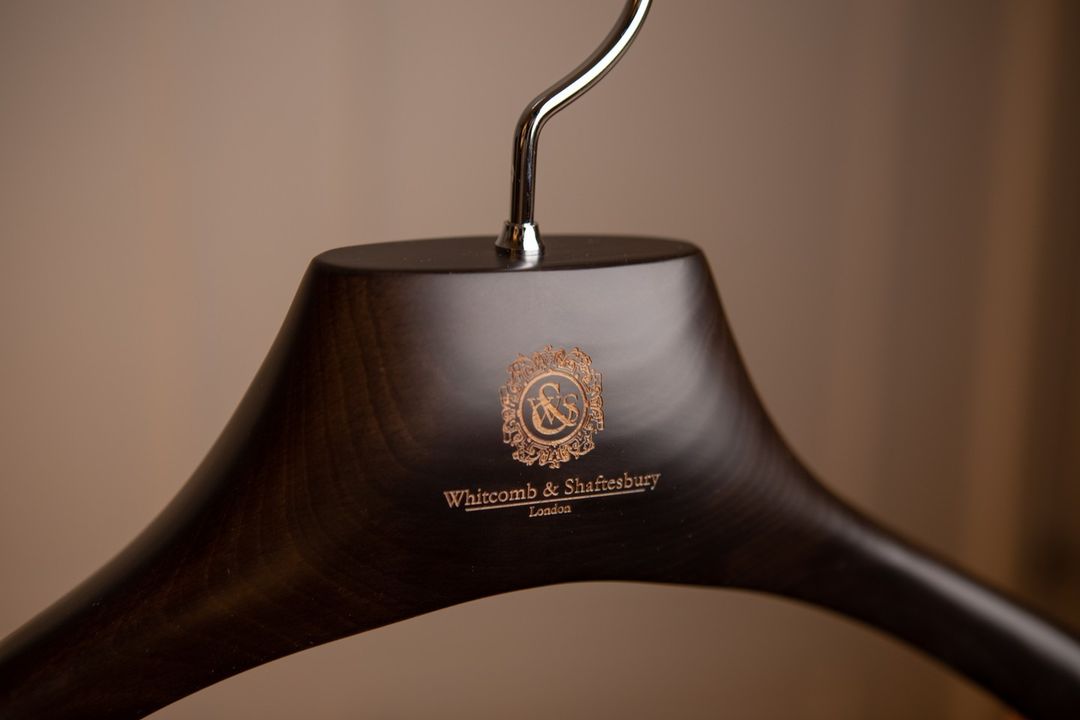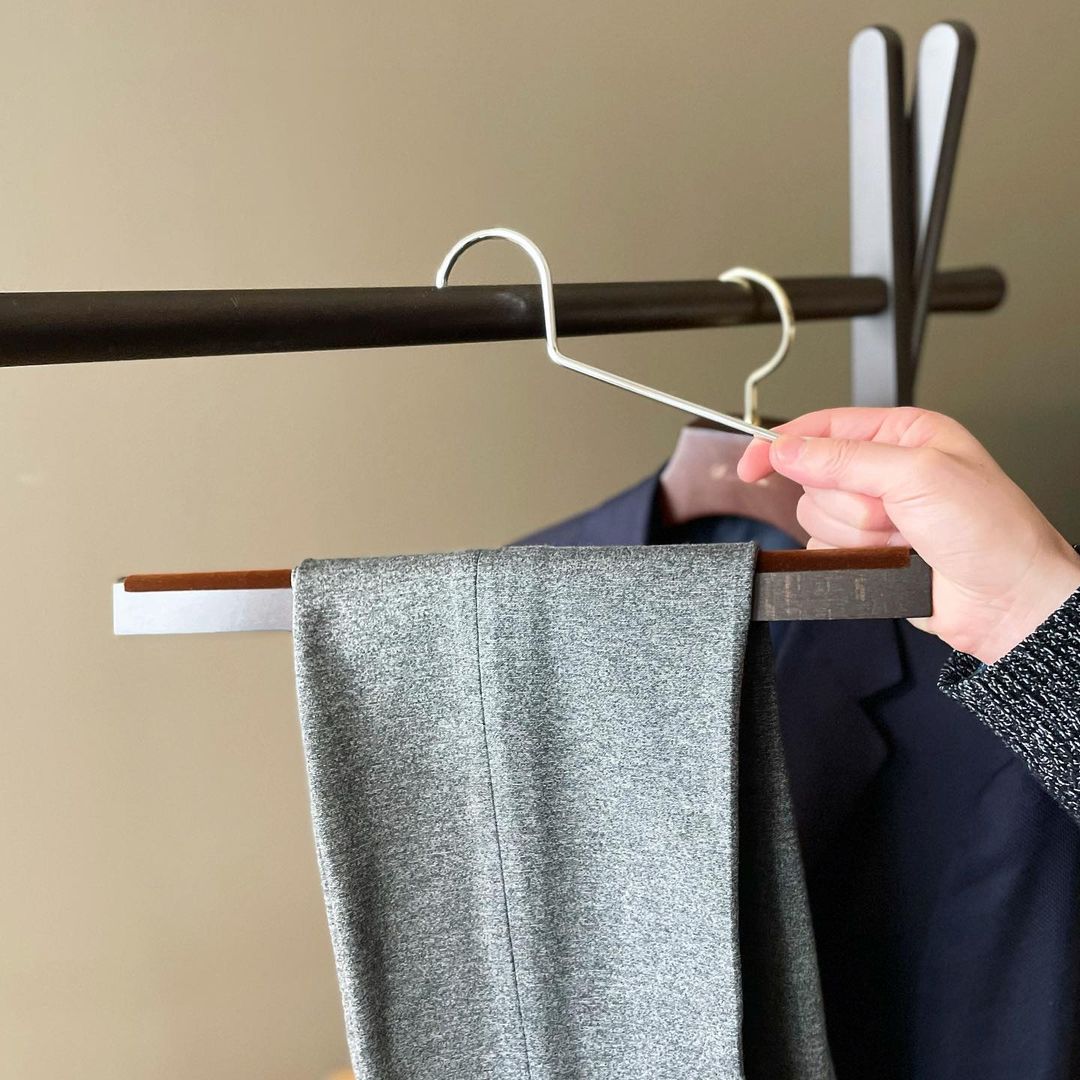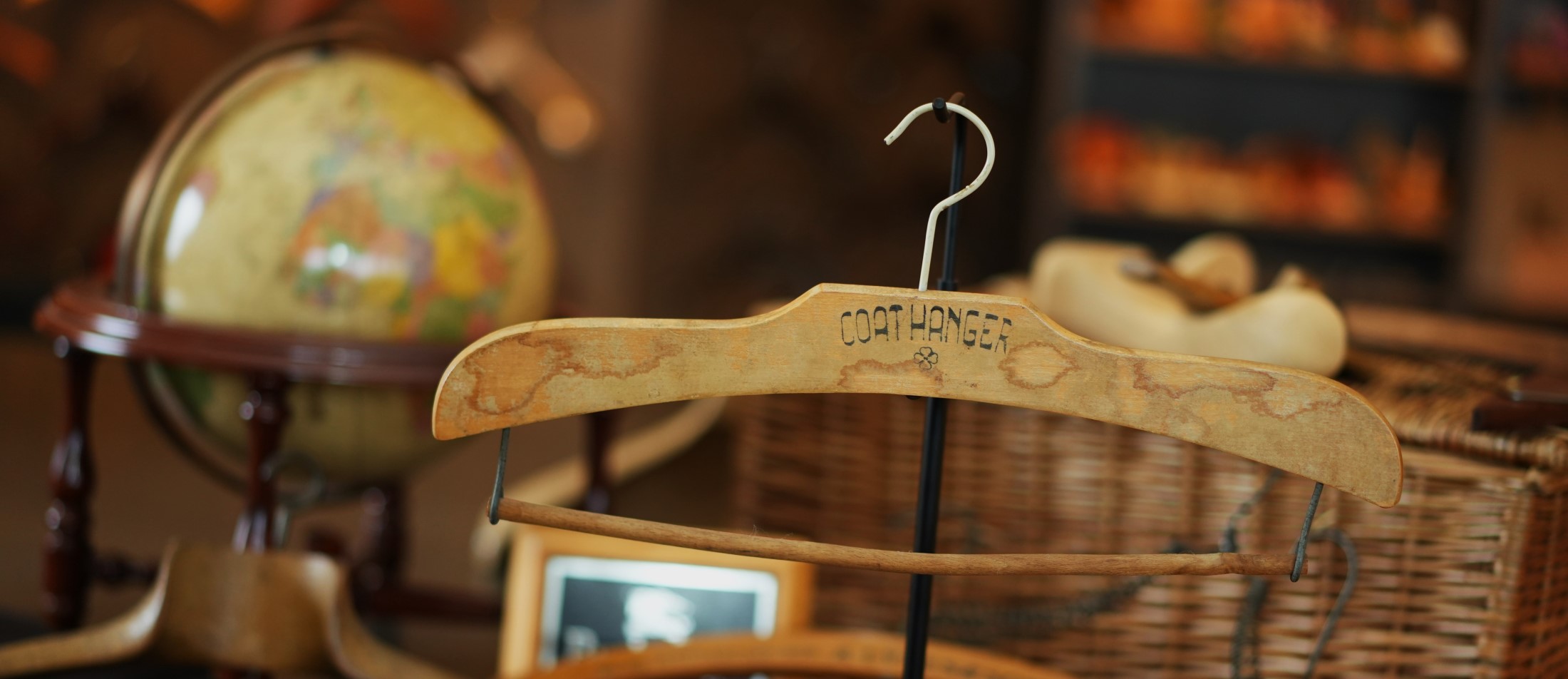
Interviewed By Mr.William Wong
Exploring The Hanger World
Shuhei, founder of NAKATA HANGER and William talk about hanger history and the potential of hangers.

William Wong
from Arterton London
Shuhei Nakata
from NAKATA HANGER

There are not many written sources on hangers.We can only guess where and when they were made, based on the “text” on the hangers.
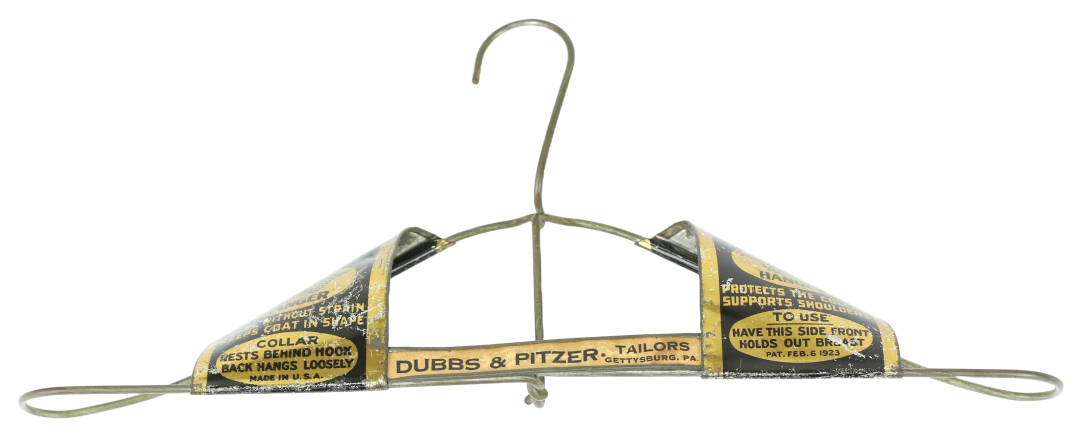
We believe that hangers became widespread in the early 19th century. They are often simple flat wooden boards with metal fittings. Designed as a consistent piece of furniture, more for storage than for keeping the shape of clothes.
In the early 20th century, many unique hangers were created, like inventions. Some of them have a small hooks on the front of hanger and the little charms on the shoulder tips.
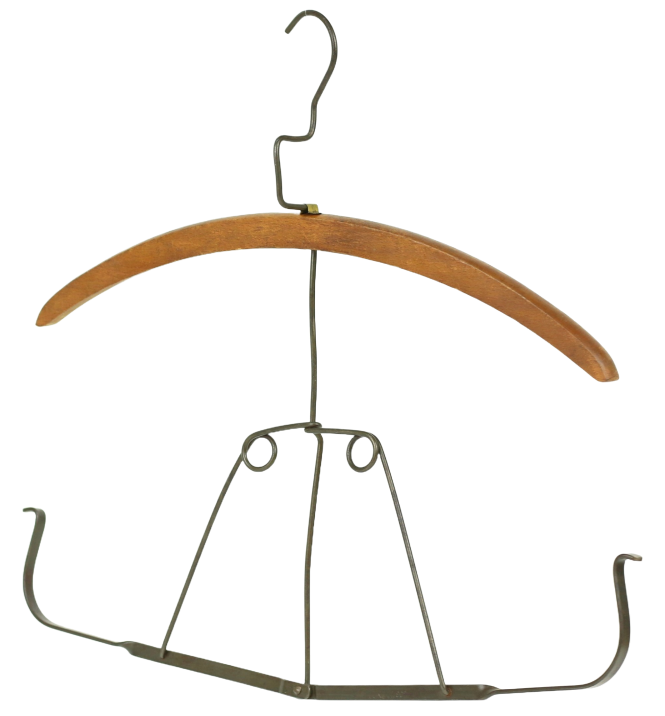
Honestly, we don't know how to use it, but if anyone knows about it, please feel free to contact us. We would love to connect with people from all over the world through the antique hangers and learn the history more.
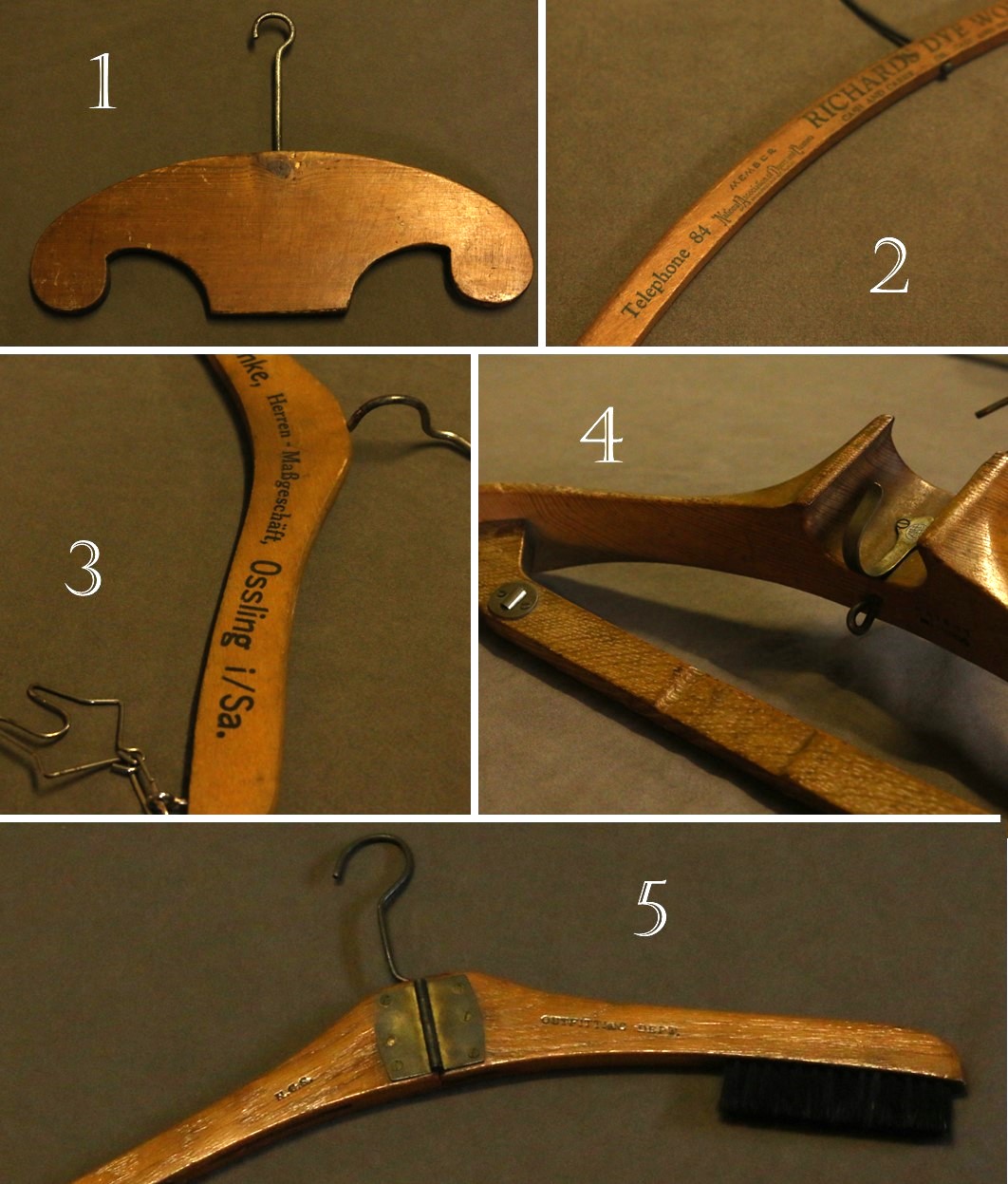
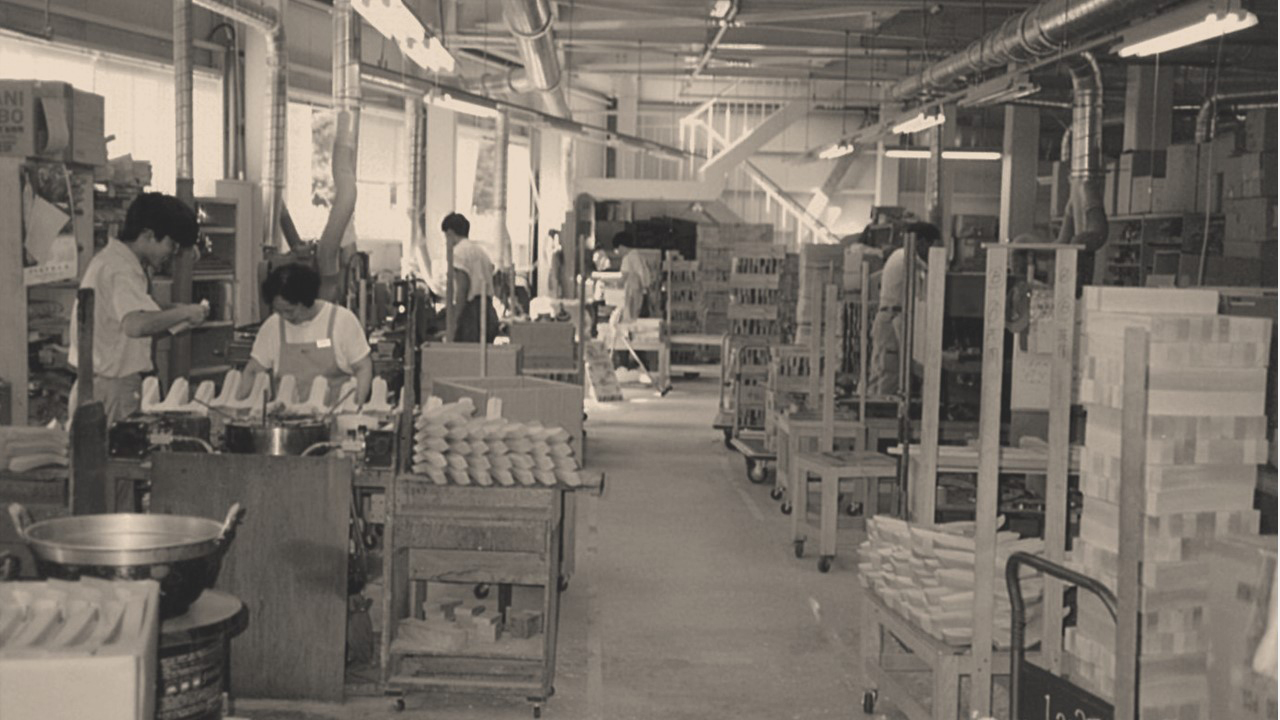
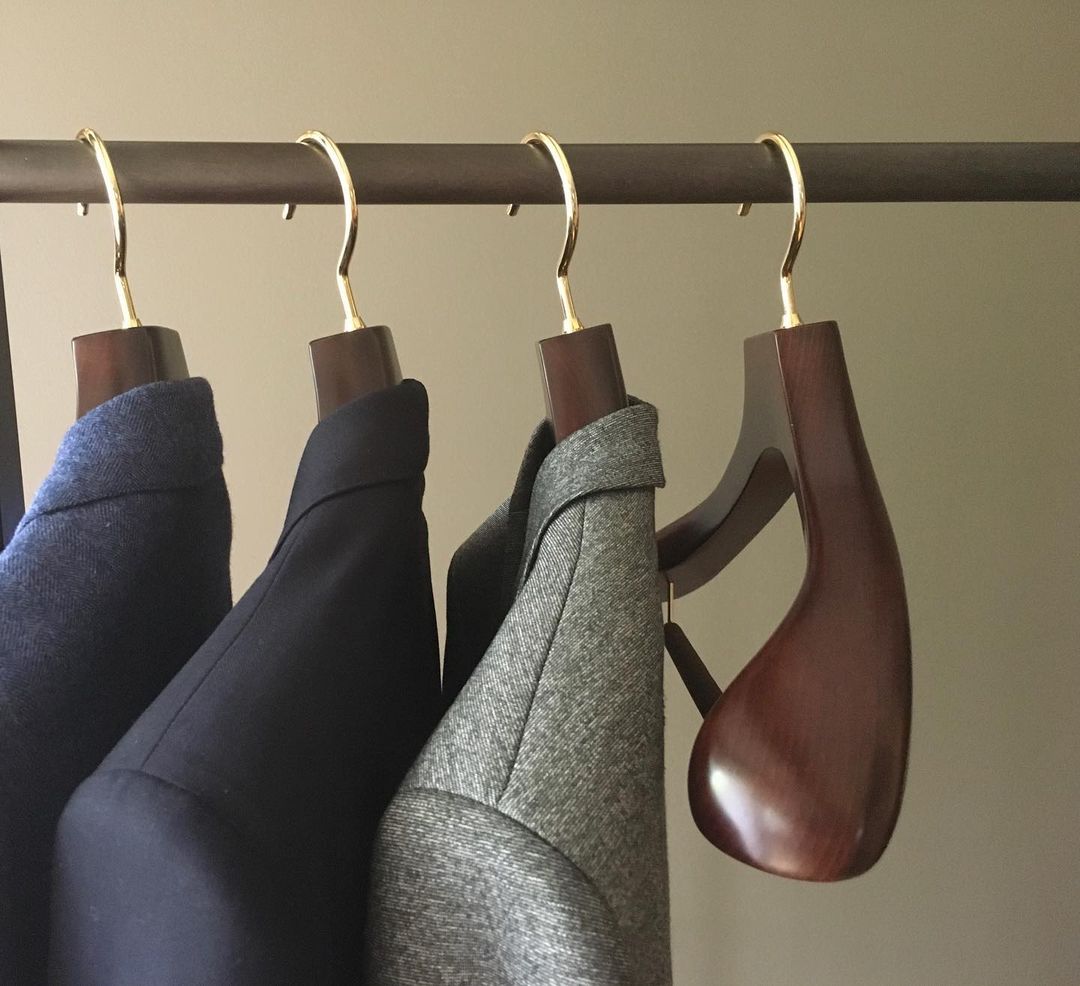
In 1946, Nakata Kogei began to focus on making hangers in Japan. Our first hanger was also flat like as early antique hanger.
As the Japanese economy developed in the 1980s and 1990s, clothing companies requested much more detailed hanger designs. As we responded to these requests one by one, we evolved the flat hanger into a three-dimensional, keep the shape of the clothes.
In 2007, we launched the NAKATA HANGER, and have been offering the high-end hangers for home use.
The most unique our feature is that offering the hangers as a special gift. In the past, hangers were just for hanging clothes, but now we add the concept of “Fuku-kake”. Because in Japanese, the word “Fuku” both means clothes and happiness, so we introduce the hanger as a lucky item. Also, we only produce wooden hangers which have the warmth of beech wood grain. We are very pleased to have been chosen as a gift option for various occasions like wedding or graduation souvenir.
Our vision is to explore the possibilities of hangers, not only functional value, but also emotional branding proposition. Create the hangers like works of art, we want to be the world's most impressive hanger brand instead of focusing on volume or business scale.





